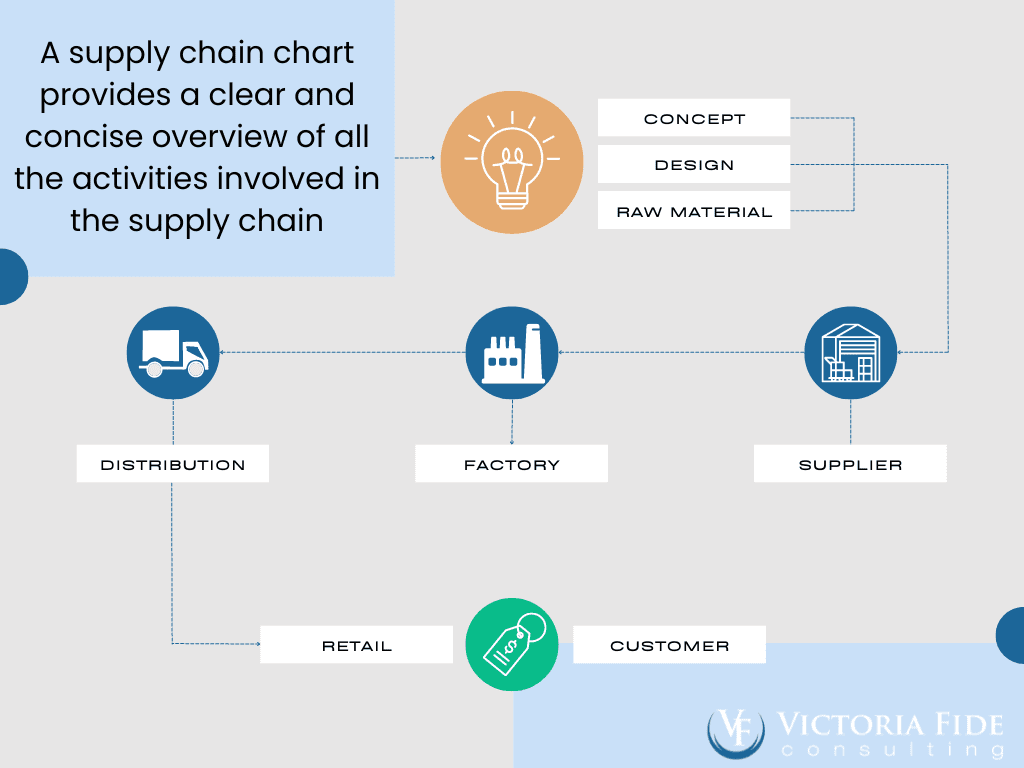
Table of Contents
What is a Supply Chain Chart?
A supply chain chart is a visual representation of the flow of goods, information, and money between suppliers, manufacturers, distributors, retailers, and customers. The chart is used to depict the entire supply chain process from the raw materials procurement stage to the final delivery of products to customers. The purpose of the supply chain chart is to help organizations understand the different elements involved in the supply chain and the relationships between them.

Supply chain management (SCM) is a crucial aspect of business operations. Companies are under constant pressure to ensure that their supply chains are efficient, cost-effective, and flexible enough to adapt to changing market conditions. A supply chain chart provides a clear and concise overview of all the activities involved in the supply chain, enabling organizations to identify areas that need improvement and to implement changes that will drive performance and growth.
Why Should I Document a Supply Chain Chart?
There are several reasons why it is important to document a supply chain chart.
- A well-documented chart provides a clear and concise picture of the entire supply chain, making it easier for all parties involved to understand their role and responsibilities. It also helps organizations to identify any bottlenecks or inefficiencies in the supply chain, enabling them to implement changes that will improve performance and efficiency.
- A supply chain chart is a useful tool for communication and collaboration between different parties in the supply chain. By providing a clear and concise picture of the entire process, it allows suppliers, manufacturers, distributors, and retailers to work together more effectively to ensure that the supply chain runs smoothly and efficiently. This collaboration helps to improve communication and coordination between different parties, reducing the risk of misunderstandings and disputes.
- Finally, a supply chain chart can help organizations to identify potential risks and make informed decisions about the future direction of their supply chain. By visualizing the entire supply chain process, organizations can identify areas that are vulnerable to disruptions or delays and take steps to mitigate the risks. This is particularly important in industries such as retail, where changes in consumer demand or unexpected events can have a significant impact on the supply chain.
Benefits of Documenting a Supply Chain Chart
The benefits of documenting a supply chain chart are numerous and far-reaching. Some of the potential benefits may include:
- Improved efficiency and performance
- Significant reduction in costs
- Improved delivery times
- Increased customer satisfaction
- Increased transparency leading to improved trust with customers and stakeholders
- Ability to mitigate risks
- Decreased chances of delays and disruptions
Supply Chain Chart: A Vital Tool
In conclusion, a supply chain chart is a vital tool for organizations looking to optimize their supply chain operations. By providing a clear and concise picture of the entire process, the chart helps organizations to identify areas that need improvement, to collaborate more effectively with different parties, and to make informed decisions about the future direction of their supply chain. With its many benefits, documenting a supply chain chart is an essential part of any successful supply chain management strategy.
